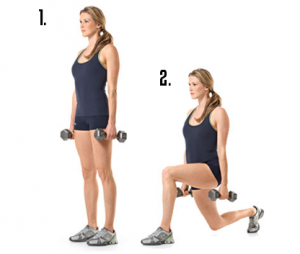
"It's all about the hips . . . bout the hips"
 I frequently see injured runners with complaints of knee, ankle or low back pain. As a physical therapist, I become very focused on the gluteal medius and maximus strength because it seems that many patients seem to have a deficiency in this area.
I frequently see injured runners with complaints of knee, ankle or low back pain. As a physical therapist, I become very focused on the gluteal medius and maximus strength because it seems that many patients seem to have a deficiency in this area.
Often my patients like to blame their complaints on "the wrong running shoes". When I came down with some back pain and right gluteal pain, almost a sciatica type, I too wanted to blame it on my running shoes. I wasn't weak, I am strong. I had just run a 50 mile ultra-marathon so it had to be the shoes. I rested, did a bit of cycling and stretching, but that vague, dull, constant ache in my low back and posterior hip continued to be a nagging irritation to me. My pain worsened with distance running and also when I sat too long.
As it is difficult to physically evaluate my low back, hips and PSIS (posterior superior iliac spine levels) I asked my daughter, a recent graduate physical therapist and runner, to evaluate my range of motion and strength. As I suspected, my gluteal strength was about a grade weaker on my involved right side. My hips were not level and my right PSIS was about one inch lower on that side.
Just like many of my patients, I am guilty of not working on my core and/or proximal hip strength. I neglected the standard type of exercise such as squats, crunches and definitely was not diligent about doing planks, one legged balance exercises and lunges.
Coincidentally I met a personal trainer at the local YMCA who was teaching a core and hip class three times a week for five weeks. I attended the class never missing one. Not being used to formal, intense group classes I soon realized just how weak I was. For an hour, three times per week, we did lunges, squats and some "insanity type" exercises with jumping and quick twitch type of "suicides" and "mountain climbers". Surprisingly my symptoms subsided by week three. After week five I went back to see my PT daughter for a re-evaluation . Both of us were shocked by visible improvement. We noted improvement in contour of both the gluteal medius and maximus and noticed that the level of the hips and PSIS are equal.
Finally, by week six, I am back on a running schedule without hip pain and sciatica. I can sit at my desk for over an hour without experiencing radiating pain.
In summary, weakness or dysfunction in the structure surrounding the hip may definitely contribute to back pain and/or a wide range of running injuries that plague the running enthusiasts. It definitely is worth the time to get a thorough musculoskeletal evaluation and dedicate time to regular strengthening of major muscle groups that are so important with one's walking and running ability.